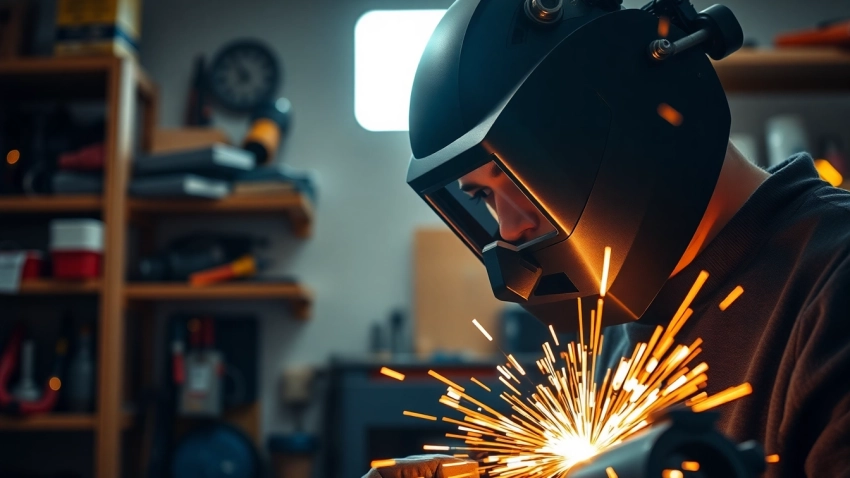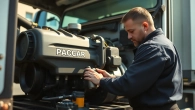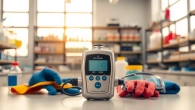
Choosing the Right Welding Mask: Essential Features and Considerations
Understanding Welding Masks
Welding masks are essential tools for anyone involved in welding, whether you’re a hobbyist or a professional. These masks not only protect against dangerous bright lights and heat but also shield against harmful fumes and debris associated with various welding processes. Given the variety of options available, understanding the different types of welding masks, their features, and their safety importance is crucial for making an informed purchase. This article will delve into everything you need to know about welding masks, ensuring you choose the right one for your needs.
What is a Welding Mask?
A welding mask, commonly referred to as a welding helmet or welding hood, is a protective shield that covers the face and neck of a welder while performing welding tasks. Its primary purpose is to protect the welder’s eyes, face, and throat from the intense light, heat, and sparks produced during welding operations. Welding masks are typically made from tough materials, making them able to withstand extreme conditions while providing optimal visibility.
Types of Welding Masks and Their Uses
There are several types of welding masks on the market, each designed to address specific needs and preferences:
- Auto-Darkening Welding Masks: These masks are equipped with sensors that detect intense light and automatically darken the lens to a pre-set shade. This feature allows for clear visibility while preparing for welding, ensuring the welder doesn’t have to lift the mask to see the workpiece.
- Passive Welding Masks: These traditional masks have a fixed lens that offers static shading. Welders must lift the mask to assess their work, making them less convenient for some tasks.
- Welding Goggles: Used for light welding and soldering, goggles provide eye protection without covering the entire face. They are often used in conjunction with other protective equipment.
- Pancake Welding Hoods: These are lightweight and low-profile helmets ideal for tight spaces. They provide excellent visibility and protection but do not offer the same level of shading as other masks.
Key Features of Quality Welding Masks
When selecting a welding mask, consider the following key features:
- Lens Shade Range: Quality welding masks often allow for adjustable shade levels, which lets you select the appropriate level based on the welding task at hand.
- Comfort and Fit: A good welding mask should fit securely and comfortably on your head. Look for adjustable headgear and lightweight materials.
- Safety Standards: Ensure the mask meets OSHA and ANSI standards for welding PPE (Personal Protective Equipment).
- Durability: Materials used should be sturdy enough to withstand high temperatures and impacts.
Importance of Safety in Welding
Welding is a highly skilled trade that comes with its fair share of hazards. Consequently, safety must be a top priority for welders. Proper training and adherence to safety protocols can significantly reduce the risk of accidents.
The Role of a Welding Mask in Safety
The welding mask plays a critical role in ensuring the safety of welders. It protects against:
- UV and IR Radiation: UV and infrared rays emitted from welding arcs can cause serious eye injuries. A quality welding mask effectively filters these harmful rays.
- Heat and Sparks: The intense heat generated during welding can lead to thermal burns without proper facial protection.
- Fumes and Particulates: Many welding processes produce hazardous fumes that can pose respiratory risks. Some masks are designed to incorporate respirators to filter airborne contaminants.
Common Hazards Encountered Without Proper Protection
Failing to use the appropriate welding mask can lead to various short-term and long-term health issues, including:
- Arc eye, or photokeratitis, which resembles sunburn of the cornea, leading to painful, temporary blindness.
- Respiratory issues from inhaling toxic fumes and metal particulates.
- Severe facial burns from sparks and molten metal.
PPE Guidelines for Welders
In addition to a welding mask, proper PPE for welders includes:
- Welding gloves to protect hands from heat and sharp edges.
- Long-sleeve shirts and trousers made from flame-resistant materials.
- Steel-toed boots to safeguard feet from falling objects and electrical hazards.
- Respirators or dust masks for protection against harmful fumes.
Selecting the Best Welding Mask for Your Needs
Choosing the right welding mask involves consideration of multiple factors, including personal preferences, comfort, and intended application. Follow these guidelines to make the best choice:
Evaluating Features: Auto-Darkening vs. Passive Masks
Auto-darkening masks are generally more convenient, providing seamless transitions between bright and dark conditions. However, they can be pricier than passive options. When choosing between them, consider:
- Your primary types of welding tasks.
- The frequency of use and level of exposure to varying light conditions.
- Your budget constraints.
Budgeting for Quality: What to Expect
Investing in a quality welding mask is vital for ensuring safety and performance. Here’s what to consider regarding cost:
- Expect to pay anywhere from $50 to $500 or more depending on features, brand, and technology.
- Auto-darkening masks usually fall at the higher end of the budget spectrum due to their advanced technology and added convenience.
- Don’t compromise on safety features for the sake of saving money; prioritize protection and comfort over cost.
Reviews and Recommendations on Leading Brands
Brands such as Miller, Lincoln Electric, and ESAB are widely recognized for producing high-quality welding masks. When considering a purchase, read customer reviews and ask for recommendations from fellow welders to make an informed decision.
Maintenance and Care of Your Welding Mask
Proper maintenance is essential to ensure your welding mask lasts and performs effectively. Follow these care tips:
Cleaning Procedures for Different Welding Masks
Cleaning techniques depend on the type of mask:
- For auto-darkening masks, avoid using abrasive materials on the lens. Use a soft cloth and mild soap solution to gently clean the surface.
- For passive masks, ensure to clean both the interior and exterior regularly to prevent build-up of debris that may obstruct visibility.
Storage Tips to Extend Lifespan
Store your welding mask in a cool, dry place when not in use. Consider investing in a protective case to prevent scratches and damage. Keep the lens shield away from direct sunlight to prevent degradation over time.
Signs of Wear and When to Replace
Monitor your mask for these signs indicating it may be time for a replacement:
- Scratches or damage on the lens that obstruct vision.
- Cracks in the protective shell.
- Worn-out straps or headgear that compromise fit.
Innovations in Welding Mask Technology
The welding industry continuously evolves, and welding mask technology is no exception. Keeping abreast of innovations can help you find a mask suited to modern needs and challenges.
The Future of Welding Mask Design
Emerging designs include:
- Lightweight materials that enhance comfort without compromising protection.
- Advanced lens technology that not only darkens but also allows for high-definition visibility and clarity.
- Increased connectivity features, including Bluetooth technology for hands-free communication in noisy environments.
Integrating Technology for Enhanced Safety
Innovations like integrated respiratory systems and communication systems are becoming commonplace, allowing for greater focus on welding tasks without sacrificing safety.
Customer Feedback and Trends in the Market
Trends indicate a growing preference for auto-darkening, lightweight designs among welders. Feedback highlights the importance of user comfort, ease of use, and the ability to see workpieces clearly.












Leave a Reply